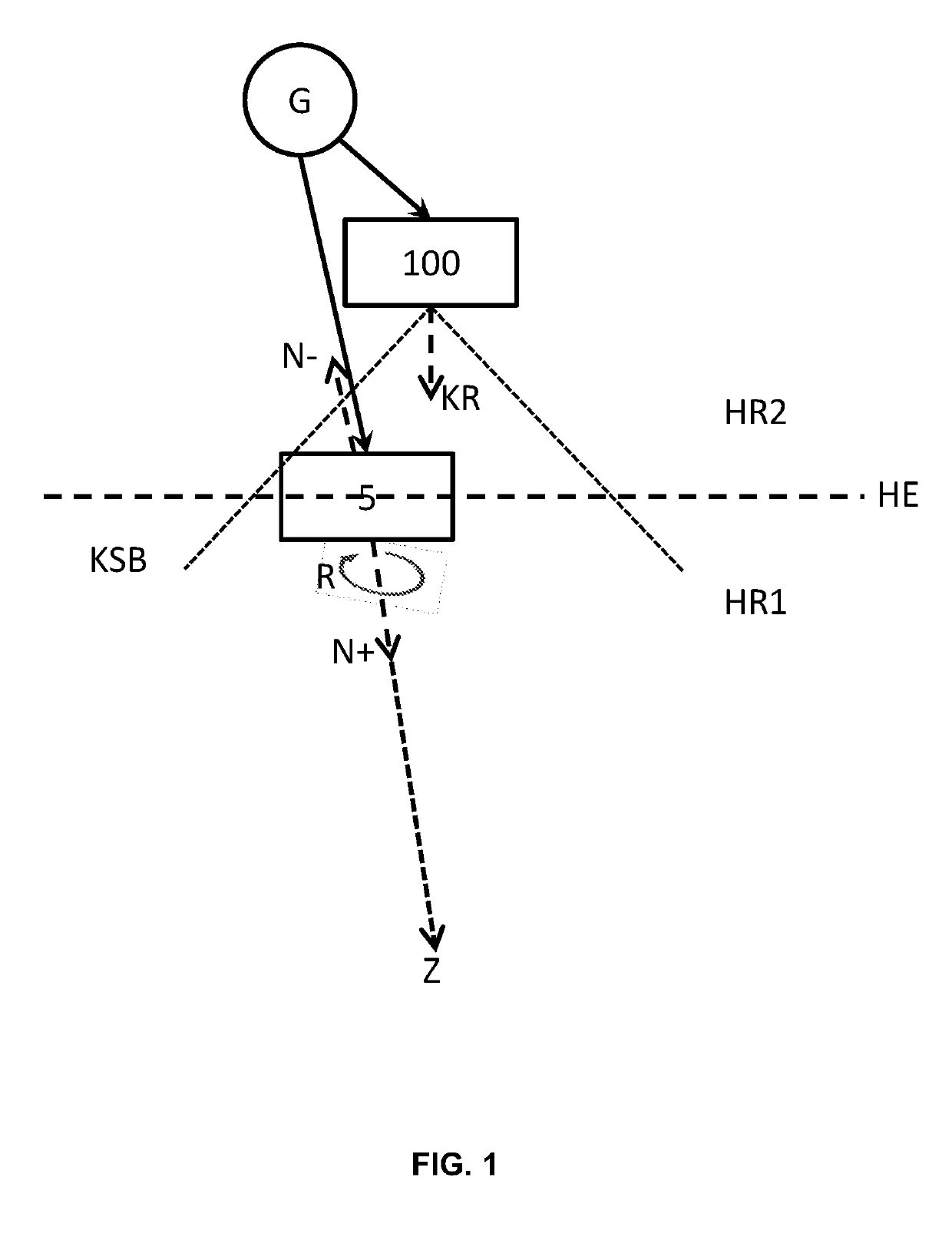Method for interacting a pointing device with a target point arranged on a projection screen of a virtual desktop and pointing device therefore
a pointing device and target point technology, applied in the direction of user-computer interaction input/output, instruments, electric digital data processing, etc., can solve the problems of social acceptance problems, user discomfort, user physical movements of users of such pointing devices, etc., and achieve the effect of simple body movements and less conspicuous movements
- Summary
- Abstract
- Description
- Claims
- Application Information
AI Technical Summary
Benefits of technology
Problems solved by technology
Method used
Image
Examples
Embodiment Construction
[0014]FIG. 1 shows a schematic representation of a methodology according to embodiments of the system described herein. A gesture generator (G) has a sample card (5) (i.e., “pattern card”) which may have a machine-readable two-dimensional code printed on one side. The pattern card (5) (or more specifically the surface of the pattern card bearing the code) defines a carrier plane (HE). As an alternative to a sample card, an electronic display also may be provided as a carrier medium for the code.
[0015]A camera (100) belonging to an image processing system has a field of view (KSB) which may be essentially determined by the viewing direction or optical axis (KR) of the camera, for example, in a known manner. The viewing direction of the camera (100) may be oriented away from the gesture generator (G). This could be the case, for example, if the gesturer holds the camera (e.g., integrated in a smartphone) with a first hand and the carrier medium (5) of the code with a second hand and p...
PUM
 Login to View More
Login to View More Abstract
Description
Claims
Application Information
 Login to View More
Login to View More - R&D
- Intellectual Property
- Life Sciences
- Materials
- Tech Scout
- Unparalleled Data Quality
- Higher Quality Content
- 60% Fewer Hallucinations
Browse by: Latest US Patents, China's latest patents, Technical Efficacy Thesaurus, Application Domain, Technology Topic, Popular Technical Reports.
© 2025 PatSnap. All rights reserved.Legal|Privacy policy|Modern Slavery Act Transparency Statement|Sitemap|About US| Contact US: help@patsnap.com

